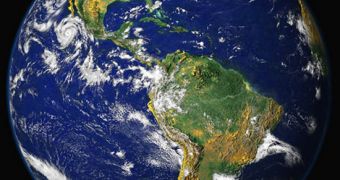Talking at the National Astronomy Meeting at the University of St Andrews, astrobiologist Jack O’Malley-James argued that, in less than a billion years, only microbes would be left to inhabit our planet.
The researcher claimed that, within said time frame, all plant and animal species would go extinct.
Oddly enough, this will not happen because of environmental pollution or the like. On the contrary, the world's demise is to be brought about by a phenomenon humans cannot possibly control: the aging of the Sun.
Jack O'Malley-James explains that, as the Sun ages, it grows hotter and hotter. Having a hotter Sun tower over our planet will translate into higher evaporation rates.
Besides, our planet's atmosphere will undergo several changes and have its chemical make up considerably altered. More precisely, it will lose most of its carbon dioxide.
Once this happens, plant species that rely on photosynthesis to survive will inevitably disappear. Herbivores will not take long to follow, and carnivores won't be having the time of their lives either.
Needless to say, there is no way humans could survive in such harsh environmental conditions.
Jack O'Malley-James says that, although they will probably outlive all plant and animal species, microbes are bound to eventually disappear as well.
The researcher theorizes that it will be another one billion years before planetary oceans evaporate almost in their entirety and microbes find that they have few places left to hide.
“The far-future Earth will be very hostile to life by this point. All living things require liquid water, so any remaining life will be restricted to pockets of liquid water, perhaps at cooler, higher altitudes or in caves underground,” the astrobiologist argued, as cited by Daily Mail.
Whatever creatures will roam the Earth 2 billion years from now will have to be well adjusted to life in environment characterized by high temperatures and intense ultraviolet radiation.

 14 DAY TRIAL //
14 DAY TRIAL //